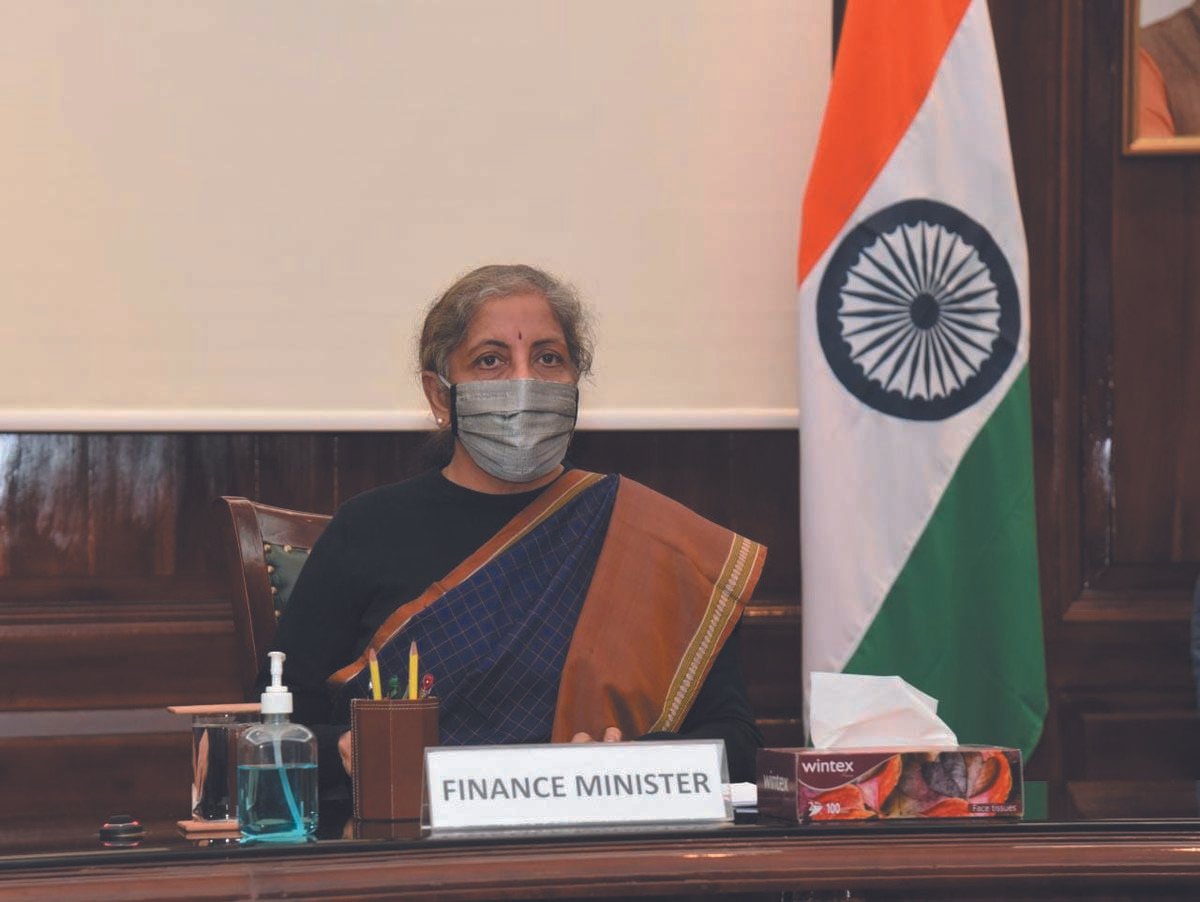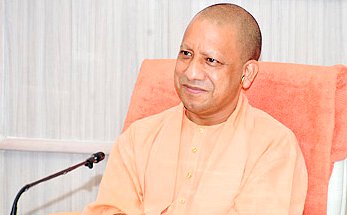ECONOMY
BUDGET 2021-22: The upcoming Union Budget can helm economic revival by stimulating demand, creating jobs and facilitating investments.
- IBJ Bureau
- Dec 31, 2020

All eyes now seem fixed on Union Finance Minister Nirmala Sitharaman and her upcoming Union Budget 2021-22, slated for February 1. A series of stimulus packages of the Narendra Modi government to combat economic downturn, precipitated by COVID-19, have done little to revive the economy. So, hopes are naturally running high on the upcoming Budget to steer an economic recovery.
Ms Sitharaman will be presenting her third Budget in perhaps the toughest of times. It is true that the finance minister’s earlier two Budgets for 2019-20 and 2020-21 were also unveiled amid many challenges of an economic downswing. However, the situation has worsened now, and the Indian economy is already in recession with growth contracting in the first two quarters of 2020-21. The Gross Domestic Product (GDP) contracted sharply by 23.9 per cent in the June 2020 quarter and plunged again by a lower 7.5 per cent in the September 2020 quarter. Moreover, the situation has aggravated further with the viral epidemic injecting a high dose of uncertainty about everything.
There was a brief period of optimism during September and October, when some sectors of the economy bounced back into the positive territory. But they could not sustain the growth momentum in ensuing months. In fact, the short-lived rebound only appeared to be a result of pent-up and festive demand.
Meanwhile, barring a few segments, there is deep distress across various sectors of the economy. In these troubled times, the upcoming Union Budget provides a huge opportunity to infuse life back into the economy. Ms Sitharaman too has emphasised on sustaining high public expenditure to get the economy up and running again. “I have to be conscious that if I don’t spend now, the stimulus then is meaningless; if I don’t spend now, the revival is going to get deferred, and we can’t afford that,” stresses Ms Sitharaman. In fact, the upcoming Budget can helm economic revival by focusing on measures that will stimulate demand, create jobs and facilitate investments.
Inducing demand
The Indian economy has been in a downward spiral for over two years now. A peculiar nature of this slowdown has been a prolonged, subdued demand, precipitated by some of the government’s policies, such as demonetisation and hasty rollout of the Goods and Services Tax (GST). These policies have crushed the informal sector – which accounts for a little over half of the country’s GDP – and have had a severe impact on demand. The viral epidemic-triggered lockdown dealt a deadly blow to this tottering demand, pushing the economy into recession.
Hence, the first task of the Union Budget would be to revive this demand. The Modi government has rightly zeroed in on a massive public spending on infrastructure to boost demand across the board. When the infrastructure sector moves, it pulls along more than 200 other sectors. It is also a key driver of unskilled employment generation. No wonder, days before the Union Budget 2020-21, the finance minister had unveiled the ambitious National Infrastructure Pipeline (NIP) worth Rs 111 lakh crore to be completed by 2024-25.
There is need to strengthen the social sectors, particularly education and healthcare. Unlocking private sector capital in these sectors should be a priority of the Budget.
But with a year drawing to a close since the launch of NIP, very little has been achieved, partly due to the prolonged lockdown. Only around 1,739 of the total 7,357 projects of NIP – accounting for about a mere 24 per cent – are under development. Funding is a major hurdle before the NIP or, for that matter, other infrastructure projects. The private sector has mostly bowed out of large capex programmes. The government had been the big spender on infrastructure a few years ago. However, data on project tenders shows that on a trailing, 12-month basis, government spending on infrastructure has fallen by 40 per cent.
In her Union Budget, Ms Sitharaman will therefore have to facilitate accelerated pace of infrastructure investments. Even as the NIP is a five-year plan, the Budget should look at front-ending the projects under NIP and try and complete around 50 per cent of the projects in the next two years. This will help stimulate demand across sectors and push job creation.
No project funding would be successful without reforming the country’s financial sector. There is an urgent need to clean up the non-performing assets (NPAs) of banks and solve the liquidity crisis of non-banking financial companies (NBFCs). More importantly, the need for a development finance institution (DFI) has never been felt so strongly than today, with banks failing to fund long-term projects.
Meanwhile, 2020 has been a watershed year, especially for the salaried classes, which have been hit by pay cuts and job losses. Most products and services can become cheaper with tax cuts. But with GST, this is outside the realm of the Union Budget. The GST Council should try to slash taxes of consumer products, make them affordable and thus push consumer demand.
The Budget, in the meantime, can make the life for the salaried classes easier. It can increase the Standard Deduction limit and medical insurance benefits and raise tax exemptions and rebates in the Section 80C limit of the Income Tax Act. Tax consultants opine that the benefit of Standard Deduction should also be available to taxpayers opting for taxation under the new regime, which has lower tax rates without any exemptions. These tax incentives will leave more money in the hands of people, get them to spend more, increase demand and facilitate economic growth.
Generating jobs
Job creation can clearly work wonders, as it will boost demand in the economy and stimulate economic growth. A multi-pronged approach – involving revival of employment-generating sectors, boosting exports, bringing growth back into the farm sector, easing rural distress, reviving the informal sector and facilitating private investments – will go a long way in increasing employment.
The upcoming Union Budget should look at ways of infusing growth of job-generating sectors, which can act as growth multipliers for the economy. Interest subvention scheme introduced in the previous Budget for affordable housing can be extended to mid-segment houses too to boost demand in the real estate sector. Besides, the scheme can be extended for a longer tenure instead of giving it an annual extension, and more incentives can be provided for Pradhan Mantri Awas Yojana in both urban and rural areas. Moreover, measures to facilitate funding for the sector via debt, equity and other innovative means can bring growth back and lead to large-scale employment in the sector.
More outlay, greater tax breaks and other incentives for NIP and other projects, including road, railway, port, airport and other infrastructure projects, will have a positive spin-off on a number of sectors, such as steel and cement. Besides, a big push to the construction and infrastructure sector will facilitate more job opportunities for unskilled workers.
The Budget can look at easing certain regulatory and statutory norms for a brief period in some of the large, employment-creating sectors, like automobile, textile, MSME and other manufacturing industries, to facilitate their quick revival from the downturn. Besides, hospitality, travel and tourism, transportation and civil aviation are among the services sectors that have been badly battered by COVID-19. Along with regulatory relaxations, these sectors need financial support and tax breaks. Moreover, reduced cost of doing business and norms facilitating ease of doing business can help all the sectors – including manufacturing and services – return to normal operation and result in robust hiring.
Exports have borne the brunt of lockdown across the world. The country’s export-oriented sectors, like pharmaceutical, gem and jewellery, industrial and engineering goods, textile and handicraft, among others, are also big job-creating sectors. Besides, they earn precious foreign exchange and contribute immensely to the country’s economic growth.
Exporters have been pitching for credit cost to be pegged at 2.2 per cent above the Repo Rate of 4 per cent. Besides, they want greater coverage for exporters by Export Credit Guarantee Corporation (ECGC) under the NIRVIK (Niryat Rin Vikas Yojana) Scheme, aimed at providing enhanced insurance cover at reduced premium for small exporters. “We need to bring double tax deduction scheme for internationalisations to allow exporters to deduct against their taxable income twice the qualifying expenses incurred for approved overseas activities, including market preparation, market exploration, market promotion and market presence,” opines Federation of the Indian Export Organisations (FIEO) President Sharad Kumar Saraf. The FIEO has also called for easier and timely GST refunds, tax deduction on production development in sync with that for research and development (R&D) and restoration of tax deduction on R&D spending to 200 per cent from the reduced 100 per cent.
Private investments, in the meanwhile, have dropped to a trickle, and the finance minister will have to try all the measures at her disposal to get the private sector to loosen its purse strings again. The Budget should ensure stability of long-term interest rates, given the concerns of rising inflation. Besides, ensuring a stable tax regime, ensuring sanctity of contracts and cutting red-tape and bureaucracy, among others, should top the finance minister’s agenda in her attempt to get private investments back into projects.
The Union Budget – coming as it does amid raging farmers’ protest against the new farm laws – will have to tread a cautious path to win back the confidence of agriculturists.
The Union Budget – coming as it does amid raging farmers’ protest against the new farm laws – will have to tread a cautious path to win back the confidence of agriculturists. A farmers’ group, which met the finance minister recently for pre-Budget discussions, has pushed for greater and easier access to credit, especially for small farmers. The farmers have also pushed for incentives for balanced use of fertilisers by increasing price of urea and lowering rates of phosphatic and potassic (P&K) nutrients, transport subsidy for fruits and vegetables and reduction in taxes on diesel. Ms Sitharaman should ensure that a decent allocation is made towards scaling up irrigation facilities and other farm-gate infrastructure.
Moreover, the Budget should also address the issue of rampant rural distress by facilitating agro-based industries, enhancing rural finance and boosting rural jobs. There is need to strengthen the social sectors, particularly education and healthcare. Unlocking private sector capital in these sectors should be a priority of the Budget.
Meanwhile, a downturn in the economy has been a downturn in the informal sector, which accounts for about half of the country’s GDP and around 90 per cent of its workforce. It is of paramount importance that the informal sector and employment in the sector top the agenda of Ms Sitharaman’s Budget. A major task has begun with the government starting the process of compiling data on the informal sector, including that of migrant workers. A major problem with the Modi government’s policies has been an attempt to formalise the informal economy at a very rapid pace. This has badly crushed the informal sector.
So, the Budget must look at providing succour to the informal sector by drawing up programmes and increasing allocation to support such programmes, revolving around jobs, education, skill development, healthcare and housing, among others. The need of the hour is some financial support too in the form of direct cash transfer to the vulnerable sections of the informal sector.
Besides, a scheme similar to the Mahatma Gandhi National Rural Employment Guarantee Act (MGNREGA) for the urban poor – including sanitation work, plantation of trees, maintaining public places and so on – can do a world of good to address distress in urban areas. In fact, the MGNREGA scheme has single-handedly taken care of much of the livelihood issues in rural parts of the country.
Funding growth
Incidentally, Ms Sitharaman’s past two Budgets were presented even as economic growth was sliding. After growing at 7.2 per cent in FY18, the GDP recorded slower growth of 6.8 per cent in FY19. Economic growth slipped below the sub-5 per cent level to a decade low of 4.2 per cent in FY20. Most analysts and research reports estimate the GDP to contract by over 8 per cent in FY21 as fallout of COVID-19.
A fundamental problem with Ms Sitharaman’s past two Budgets was that they addressed supply-side issues, such as infrastructure and housing, which is good. But the economic downturn was more to do with sliding demand. Moreover, the viral pandemic has led to a severe demand shock, and the finance minister will have to spur this demand to get growth back.
Sadly, the stimulus packages – largely centred on debt – unveiled by the government so far hardly make up a little over 1 per cent of its public spending. It is high time that the government came out of its overly-fiscal-prudent mindset and spent more to revive the economy.
The fiscal deficit – difference between the government’s total expenditure and total revenue – for FY21 is expected to be in the range of 7.5 to 8 per cent of the GDP. It was targeted at 3.5 per cent of the GDP in the Union Budget 2019-20. The fiscal deficit has understandably shot up with COVID-19 expenses related to stimulus packages and other measures. With tax and non-tax revenues falling short and expenditure on vaccine and other issues set to mount, it will be impossible to go by the old targets of fiscal deficit.
However, there is no room for despair. Many economists opine that the government need not unduly worry about the fiscal trajectory for FY22 and instead continue to spur official spending. Moreover, the government too finds itself unencumbered by strict fiscal considerations. The 15th Finance Commission is learnt to have recommended an easing of fiscal deficit target up to 2025-26 in light of the extraordinary situation.
So, without being overly concerned with fiscal deficit, the government should go ahead with funding economic recovery. The government, of course, will be confronted with shortage of funds. Several economists and analysts have listed out various avenues by which the government can raise resources. “The next Budget is an opportunity to provide catalysts to boost the economy. We should look at out-of-the-box measures to accelerate growth and stimulate demand,” notes FICCI President Uday Shankar.
The economists and analysts have urged the government to utilise a small part of foreign exchange (forex) reserves for setting up a fund. This fund can be lent to Indian industry at a lower rate in rupees for new projects as well as expansion plans. They have also asked the government to use a part of the country’s forex reserves for setting up a DFI for financing long-term infrastructure projects.
More banks can be set up and some, well-governed NBFCs can be converted into banks for supporting industrial and economic growth. Besides, Build India Bonds, denominated in rupees at very low interest rates, can be floated to raise global capital for a long tenure, ranging between 20 and 50 years to finance economic and social infrastructure projects.
Long-term pandemic bonds can be issued in both domestic and international markets to provide additional space for the government to borrow. Besides, making Sovereign Gold Bond Scheme on tap will help mobilise a significant amount of household savings into funding economic growth.
The economists and analysts have called on the government to pledge shares of public sector undertakings (PSUs) owned by it with the RBI and raise resources at low rates. Moreover, the government should accelerate its disinvestment programme – the government has so far mopped up only Rs 10,500 crore of its FY21 target of Rs 2,10,000 crore – and monetise non-core assets of its various agencies and corporations.
The viral pandemic
has upended the Indian economy, and the pain is set to further intensify with
each passing day. Beyond data and statistics, the informal sector is perhaps
going through its worst phase, with many small shops and businesses shut and
several more jobs lost. From sub-7 per cent and sub-5 per cent growth, the
economy is in recession. And the stimulus packages are not yielding the desired
results. It is time that
Ms Sitharaman’s upcoming Budget got its math right and paved the way for
economic revival.




















Report By
View Reporter News